 W
WBambi, a Life in the Woods is a 1923 Austrian coming-of-age novel written by Felix Salten and originally published in Berlin by Ullstein Verlag. The novel traces the life of Bambi, a male roe deer, from his birth through childhood, the loss of his mother, the finding of a mate, the lessons he learns from his father, and the experience he gains about the dangers posed by human hunters in the forest.
 W
WBambi's Children: The Story of a Forest Family is a 1939 coming-of-age novel written by Austrian author Felix Salten as a sequel to his successful 1923 work Bambi, a Life in the Woods.
 W
WCarl Haffner's Love of the Draw is a 1998 chess novel by Austrian writer Thomas Glavinic. It was Glavinic's first novel and is about a shy and withdrawn Viennese chess master who in 1910 challenges the World Champion for his title. The book was translated into English in 1999 by John Brownjohn for London-based publisher Harvill Press.
 W
WDie Stadt ohne Juden is a 1924 Austrian Expressionist film by Hans Karl Breslauer, based on the book of the same title by Hugo Bettauer. The film is one of the few surviving Expressionist films from Austria and has therefore been well researched. The film was first shown on 25 July 1924 in Vienna.
 W
WThe Dog King is a 1995 novel by the Austrian writer Christoph Ransmayr. Its original title is Morbus Kitahara. A work of alternative history, it is set in Central Europe after World War II and the implementation of the Morgenthau Plan, which has deindustrialized the region and created a ruthless post-apocalyptic-esque society. The main character is the son of a blacksmith who becomes the bodyguard of the only man in the area who owns a car.
 W
WFebruary Shadows is a 1984 historical novel by award-winning Austrian author Elisabeth Reichart. She wrote it as a response to her discovery of the Mühlviertler Hasenjagd, a massacre on 2 February 1945 at the Mauthausen-Gusen concentration camp in Upper Austria. In the Mühlviertler Hasenjagd, the civilian inhabitants of the Mühlviertel hunted down and killed almost 500 prisoners, including men, women and children, who escaped from Special Barracks Number 20.
 W
WFrom Nine to Nine or Between Nine and Nine is a novel by Leo Perutz first published in 1918. It is about a turbulent day in the life of an impoverished student in Imperial Vienna. The commission of a desperate crime at the beginning of the novel triggers a chain reaction during which the protagonist is thrown into a series of grotesque situations while all around him people carry on with their normal lives without noticing anything out of the ordinary.
 W
WGreed is a 2000 novel by the Austrian writer Elfriede Jelinek. It was the first novel of hers to be translated into English after winning the Nobel Prize for Literature, and also the first book of hers to be translated into English in seven years. The English translation was published by Seven Stories Press in 2008. While much of her work is rooted in the Austrian literary tradition, she has also been known to take a feminist stand on the dealings of the Communist Party of Austria.
 W
WKomm, süßer Tod is a 1998 novel by Austrian author Wolf Haas. It is named after a musical piece by Johann Sebastian Bach. It was picturised in 2000 as Komm, süßer Tod.
 W
WThe Last World is a 1988 novel by the Austrian writer Christoph Ransmayr. Set in an inconsistent time period, it tells the story of a man, Cotta, who travels to Tomi to search for the poet Naso, who had settled there in political exile, after hearing rumours that Naso has died. In the town, Cotta encounters a number of characters from Ovid's Metamorphoses. The Last World was published in English in 1990, translated by John E. Woods.
 W
WMalina is a 1971 novel by the Austrian writer Ingeborg Bachmann. It tells the story of a female writer and her relationships with two different men, one joyous and one introverted. The book was adapted into a 1991 film with the same title, directed by Werner Schroeter from a screenplay by Elfriede Jelinek.
 W
WMars in Aries is the most widely known novel by the Austrian writer Alexander Lernet-Holenia. It was written during the winter of 1939-1940 and is about the author's combat experience during the invasion of Poland by the German Wehrmacht at the start of World War II. The novel draws its disturbing quality from an intimate interlacing of precisely described authentic combat episodes with a concept of a pervasive Otherworld that merges with our reality in a way that makes it difficult to determine whether one has already transgressed its borders. It stands in the tradition of the early 20th-century Austrian psychological novel genre of which Schnitzler's Dream Story and Perutz' The Master of the Day of Judgement are other famous examples.
 W
WMy Year in the No-Man's-Bay is a 1994 novel by the Austrian writer Peter Handke. It follows a writer's attempt to describe a metamorphosis he went through two decades earlier, when he stopped being confrontative and instead became a passive observer. The task proves to be difficult and most of the book is instead concerned with the lives of the narrator, his family and the people in the Paris suburb where he lives. The book is 1066 pages long in its original German. It was published in English in 1998, translated by Krishna Winston.
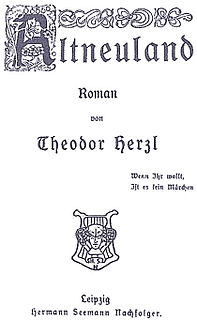 W
WThe Old New Land is a utopian novel published by Theodor Herzl, the founder of political Zionism, in 1902. It was published six years after Herzl's political pamphlet, Der Judenstaat and expanded on Herzl's vision for a Jewish return to the Land of Israel, which helped Altneuland become one of Zionism's establishing texts. It was translated into Yiddish by Israel Isidor Elyashev, and into Hebrew by Nahum Sokolow as Tel Aviv, a name then adopted for the newly founded city.
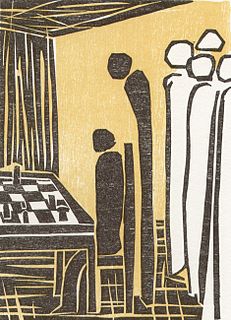 W
WThe Royal Game is a novella by the Austrian author Stefan Zweig written in 1941, the year before the author's death by suicide. In some editions, the title is used for a collection that also includes "Amok", "Burning Secret", "Fear", and "Letter From an Unknown Woman".
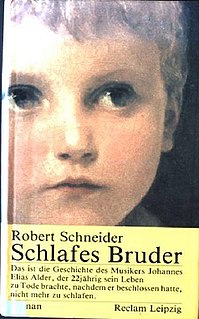 W
WSchlafes Bruder is a novel by Austrian writer Robert Schneider, first published in German in 1992. It was an international success and was adapted into a feature film and an opera, among others.
 W
WShort Letter, Long Farewell is a 1972 novel by the Austrian writer Peter Handke. It tells the story of a young Austrian writer who travels across the United States in search of his wife from whom he is estranged. The film-director John Ford appears as a character who brings resolution at the end of the road on the coast of California. His film Young Mr. Lincoln also serves as a point of reference and an antidote to the alienation experienced by the stranger crossing the States. The novel shares many themes and motifs with the film Alice in the Cities from 1974, directed by Handke's frequent collaborator Wim Wenders; the film can be seen as a response to the book.
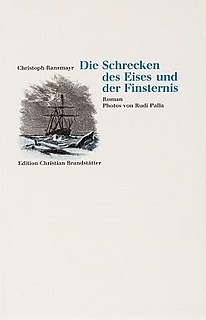 W
WThe Terrors of Ice and Darkness is a 1984 novel by the Austrian writer Christoph Ransmayr. It tells the stories of the 1872–74 Austro-Hungarian North Pole expedition, of a young Italian man who disappeared in 1981 while researching the expedition, and of the narrator, who tries to figure out what happened to the Italian.
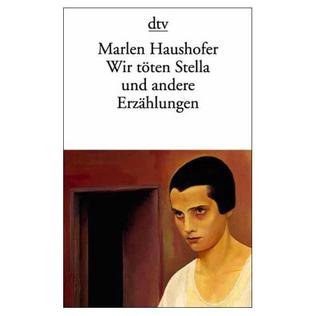 W
WWir töten Stella is a novella by Austrian writer Marlen Haushofer first published in 1958 about the death of the eponymous heroine, a 19-year-old woman who has just begun to experience her awakening sexuality. Narrated by Anna, a 40-year-old mother of two in whose house Stella has spent her final months, Wir töten Stella provides an insight into the bourgeois society of post-war Austria and paints a picture of a deteriorating family whose overall ambition is to keep up appearances.